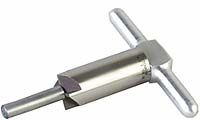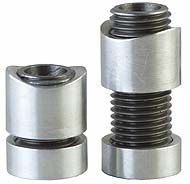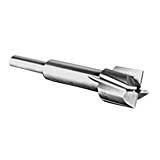In my years working on guns, I have seen a large number of totally botched bedding jobs. In fact, you would be shocked to see what people do to their guns’ bedding to increase the accuracy of a rifle. But do you know how to spot the most common mistakes in bedding, thereby giving you a leg up in improving a gun’s accuracy, or avoiding it altogether? Following are the most common problems shooters should watch for:
Courtesy

The Point of Pillar Bedding on Rifles
Bedding began when most stocks where made of wood. Wood is a good material for stocks because it’s fairly lightweight and durable, but because it absorbs moisture, it can change shape and make the fit between action and stock unstable. This lack of consistency produces inaccurate results downrange.
Bedding provides a custom fit of the action to the stock. It also keeps lateral forces from wooden stocks from influencing the groups. In modern polymer and fiberglass stocks, bedding functions as a form fit of the action to the stock. I believe bedding is not as critical in these petrochemical products, but even synthetic stocks can benefit from a good bed job.
Bedding the receiver in the stock and floating the barrel are the most common bedding processes. The idea is to mate the rifle’s receiver to the stock, while letting the barrel float free so it can vibrate while the bullet accelerates down the bore. However, this simple concept can go awry in a number of ways.
Pillar Bedding Materials: Look For Tried-And-True Products
I have seen guns bedded with window caulking, automotive body putty, RTV silicone, liquid steel, and other compounds whose identity still remains a mystery. This is asking for trouble. Performance characteristics of these nonstandard materials vary so much that you can never be sure of a good bedding job. Instead, I use an aluminum-filled bisphenol ether resin, but it has the problem of being unsightly. It takes a great deal of experience to ensure its silver cast isn’t visible to the casual observer.
However if you’re examining a gun that has been bedded with Brownells Acra Glass, rest easy. It is easily to work with, produces a good bedding surface, and resists damage from strong bore cleaners and solvents.
However, even using good materials can be a problem if they aren’t cured right. Check the edge of any bedding surface to see if it is crisp and sharp. If the edge of the surface seems to be breaking down, you can bet the materials weren’t cured properly. Most two-component bedding materials require at least a 70-degree temperature for cure out, but many shouldn’t be cured at more than 95 degrees. Both time and temperature are important, and too-hot air unnecessarily speeds the curing process, which can lead to material breakdown later. You should pass on a gun whose bedding seems fragile.
Brownells

Please Use a Release Agent
The most common problem with this type of bedding is not using a release agent (or not using enough agent) and subsequently gluing the action to the stock. I charge a lot to remove these actions, thus proving the truth in this adage: Whatever I charge will be twice as high if you worked on it first. Still, if you’re doing one of these jobs job yourself, use an aqueous silicone spray as a release agent. It is easy to use because it may be sprayed on any surface. Other less expensive options include applying a thin coat of petroleum jelly or even a lithium grease in a very thin coating. Also, use clay to fill holes and areas that do not need bedding compound in them. Most simple modeling clays will work well for this and are available at hobby stores. Another problem area where the stock is glued on involves the action screws. Usually, a hobbyist will coat both the action and trigger guard with release agent, but he will forget to liberally coat the action screws. Thus, he glues the screws into the bedding. The best rule is coat everything with release agent.
Rifle Bedding Thickness: Too Much, Or Not Enough
Other bedding problems that I often see include the bedding being hardened too much or not enough when the action is pulled down in the stock. When the bedding is set up too much, the bedding material won’t flow into the recesses in the recoil-lug area. When the bedding isn’t hardened sufficiently, after the action is pulled down into the bedding, the bedding material runs because it is too thin. This leaves gaps and gives a poor fit, which you can usually spot.
Bedding The Sporter-Contour Barrel
Completely free-floating some light barrels is a bad idea in many cases. Barrels in a No. 2 contour or lighter need an additional bedding trick to make them shoot accurately, in my opinion.
The most difficult bedding jobs are the No. 1 and No. 2 barrel contours. Their harmonic vibrations and variations from barrel lot to barrel lot make them difficult to tune. Not only is bedding the action necessary, however, but the gunsmith should also add a forward pressure point. Such points are much like frets on a banjo. Where they contact the barrel, pressure points change how the barrel vibrates, much like a string on a banjo changes pitch when pressure is applied to different frets.
As a rule of thumb, there should be an additional barrel support about one-third of the way down the barrel. This will vary, however, so I like to bed the action first and free-float the barrel. With this stability in place, I then bed the pressure point up front. Some companies will put a screw or screws in the forearm (such as in the model 40XB) and use them to supply forward barrel support. To tune the pressure points, they must supply more upward pressure than you might think. To adjust their height, I usually take the gun to the range and reduce the pressure points’ profile by sanding them down until the bullet groups come down to the size I want.
Hand-In-Glove Fit: Look For Pillar Bedding
As a wood stock absorbs moisture from the air, the wood fibers naturally expand. But, when these wood fibers are bound by the pressure of the action screws, the fibers are forced to compress. As the moisture level in the air falls, the compressed wood fibers shrink away from the metal components resulting in loose action screws. Repeated tightening of the action screws will eventually result in the bottoming out of the top and bottom metal against the mag box or, in extreme cases, interference with the bolt as the screws come up through the action. Either of these conditions result in a poor fit between the receiver and the stock, even with conventional, synthetic bedding.
Courtesy

Pillar bedding, used along with regular ‘glas bedding, overcomes this expansion and contraction of the wood fibers. Pillar bedding is the insertion of hollow metal tubes glued solidly in place around the front and rear action screws. These tubes, or “pillars”, effectively control the compression of the fibers by maintaining the proper spacing of the triggerguard and receiver throughout the life of the stock.
Bedding The Plastic Or Fiberglass Stock
With the advent of modern thermoset plastic resins and their application in gun stocks, other bedding problems have arisen, including bedding materials not sticking to the stocks. If you have ever cooked eggs on a nonstick pan whose coating has broken down, you already know the most important part of bedding in a plastic stock. A rough surface on the stock will allow the bedding material to stick better, so it’s necessary to score the stock. I like to use a coarse burr to rout out the stock prior to bedding, and the coarser the better. Another thing to remember is to make sure the inletting area in the injection molded stock has been properly degreased. It may look completely dry and clean, but the stock manufacturers use release agents on the stock molds, and these materials are carried over on the stocks as they are produced.
Other Points To Watch For
Though the points mentioned above give you some important information about judging the quality of bedding jobs, three other items are worth looking for as well.
If a gun has a bedding block—a reinforced area around the recoil lug—that’s a good sign. Bedding blocks are a good practice, especially on heavy-recoiling rifles. Bedding blocks spread the recoil out and reduce the punishment that the recoil lug area is subjected to.
In plastic stocks, I like built-in metal bedding bases. In my opinion, some fiberglass, Kevlar, and other synthetic stocks do not have the necessary stiffness to ensure the elimination of stress problems. A metal bedding block removes that factor.
Also, I recommend the use of a torque wrench to standardize the force with which the action is pulled down into the stock. All guns shoot best when a certain amount of stress is applied on the action. To find the right amount of stress, the shooter has to adjust the torque on the action and shoot some rounds—a laborious process. Why would you want to risk altering the characteristics of a good-shooting gun by torqueing it differently if you must take it apart?
Some shooters don’t understand what bedding does, but the ones who do understand know that bedding can be a wonderful accuracy increaser as well as a marginal help.




























